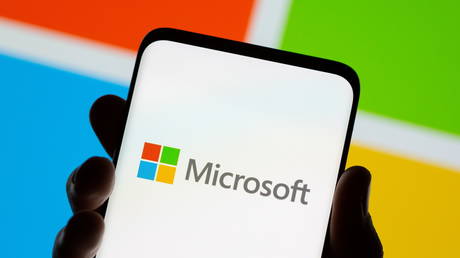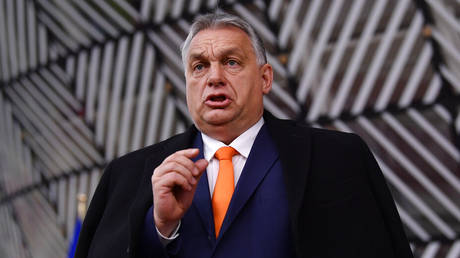
Tech giant Microsoft has followed Facebook into the Metaverse – after a fashion. Users of its Teams collaborative software will be able to appear as virtual avatars in fantasy workspaces, a step toward Facebook’s immersive VR.
Microsoft is rolling out a more Metaverse-like version of its popular Teams videoconferencing program, offering users the option of representing themselves via digital avatars and gathering in virtual workspaces, the company’s CEO Satya Nadella told Bloomberg TV on Tuesday as the new features were being shown off at the company’s Ignite event.
Beyond mere videoconferencing, the software behemoth’s augmented reality world will also allow users to share Microsoft Office files, like PowerPoint presentations and Excel spreadsheets, making it clear the Facebook competitor is optimized for work rather than play. It is based on Microsoft’s recently-debuted Mesh software, which enables augmented and virtual reality across google platforms, including – but not limited to – Microsoft’s own HoloLens. Those poor souls without 3D display capabilities can view the content in 2D, as it’s also available across tablets, smartphones, and PCs.
While Facebook hopes its Metaverse will be a place where users can “spend their entire digital lives” – a prospect which must send shivers up the spine of any privacy-conscious internet user – Microsoft has set its sights a good bit lower, with the goal of having its own virtual-reality conferencing space up and running by 2022.
Microsoft Mesh, the technology which serves as the basis for the company’s virtual-reality efforts, aims to project people as avatars into virtual space using a process called “holoportation,” with its avatars gleaned from the social network AltspaceVR, which it acquired in 2017. Mesh itself is constructed on top of Azure, Microsoft’s cloud computing service.
Corporations like Accenture and Anheuser-Busch InBev have used various versions of Microsoft’s reality-replicating software to create “digital twins” of headquarters – which served Accenture well for orientation purposes during the Covid-19 pandemic – and of supply-chain operations, which the beer company synced up with its actual facilities and current information, a valuable capability given the fragility of current supply chains.
To further merge reality and its virtual cousin, Microsoft revealed another product on Tuesday, called Dynamics 365 Connected Spaces. It will allow users to move and interact within “retail and factory spaces,” essentially standardizing the experiences clients like Anheuser-Busch built out with the help of Teams and Mesh. CEO Nadella also hinted that its gaming platform Xbox would be next for a virtual-reality buildout.
Nadella also denied there was anything “creepy” about the Metaverse, a common complaint from those who see elements of the ‘uncanny valley’ in a false world populated with cartoonish avatars. “There is nothing creepy about visiting a Covid ward remotely for a doctor to be able to help their patients, or to be able to do remote assistance in a manufacturing line in a time of Covid crisis when that manufacturing line needs to be fixed by an engineer working from home,” he told Bloomberg.
While it’s not clear if Microsoft’s stab at a Metaverse of its own will involve a significant manpower expansion, Facebook CEO Mark Zuckerberg’s project is quite ambitious. Just days after announcing the company’s renaming to Meta, Zuckerberg declared it would be creating 10,000 new positions across the EU over the next five years with $10 billion of investment by 2022, all with the aim of fully realizing his virtual-reality dream.
Indeed, Facebook will be divided into two parts under the new Meta name, with “Reality Labs” – the sector tasked with creating the Metaverse – to house 20,000 engineers in total, padded out by the new European hires.
Like this story? Share it with a friend!




